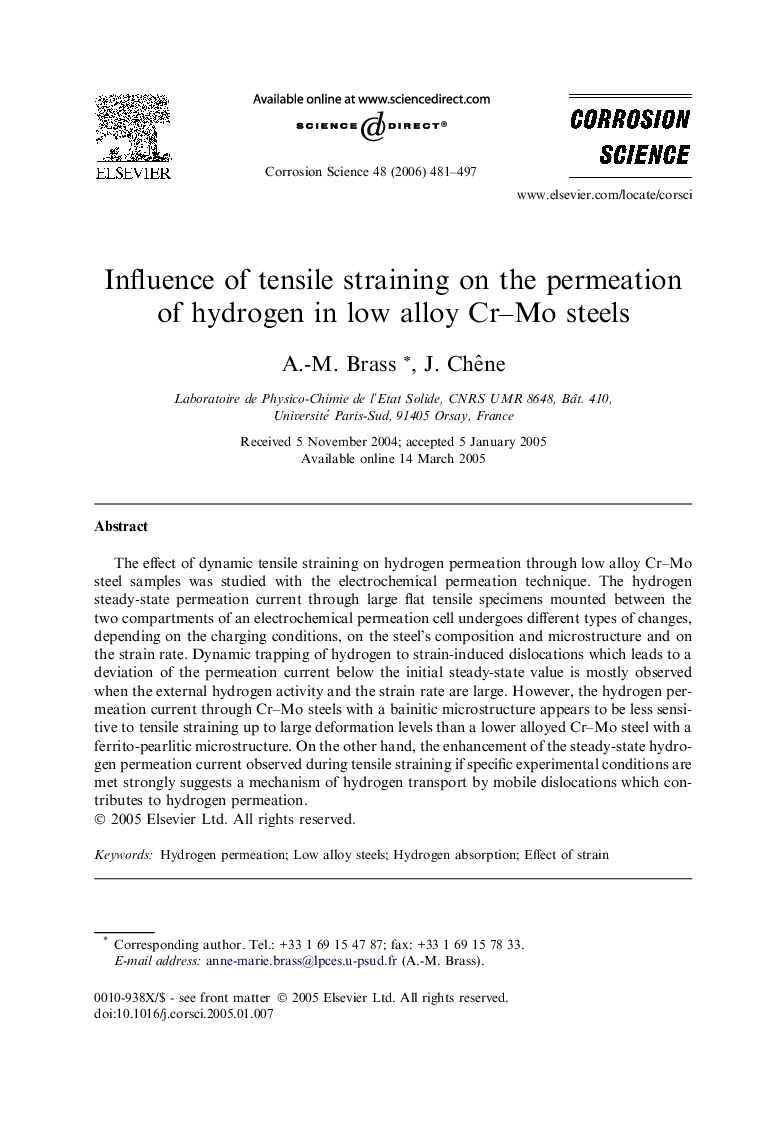| Article ID | Journal | Published Year | Pages | File Type |
|---|---|---|---|---|
| 1472362 | Corrosion Science | 2006 | 17 Pages |
The effect of dynamic tensile straining on hydrogen permeation through low alloy Cr–Mo steel samples was studied with the electrochemical permeation technique. The hydrogen steady-state permeation current through large flat tensile specimens mounted between the two compartments of an electrochemical permeation cell undergoes different types of changes, depending on the charging conditions, on the steel’s composition and microstructure and on the strain rate. Dynamic trapping of hydrogen to strain-induced dislocations which leads to a deviation of the permeation current below the initial steady-state value is mostly observed when the external hydrogen activity and the strain rate are large. However, the hydrogen permeation current through Cr–Mo steels with a bainitic microstructure appears to be less sensitive to tensile straining up to large deformation levels than a lower alloyed Cr–Mo steel with a ferrito-pearlitic microstructure. On the other hand, the enhancement of the steady-state hydrogen permeation current observed during tensile straining if specific experimental conditions are met strongly suggests a mechanism of hydrogen transport by mobile dislocations which contributes to hydrogen permeation.
